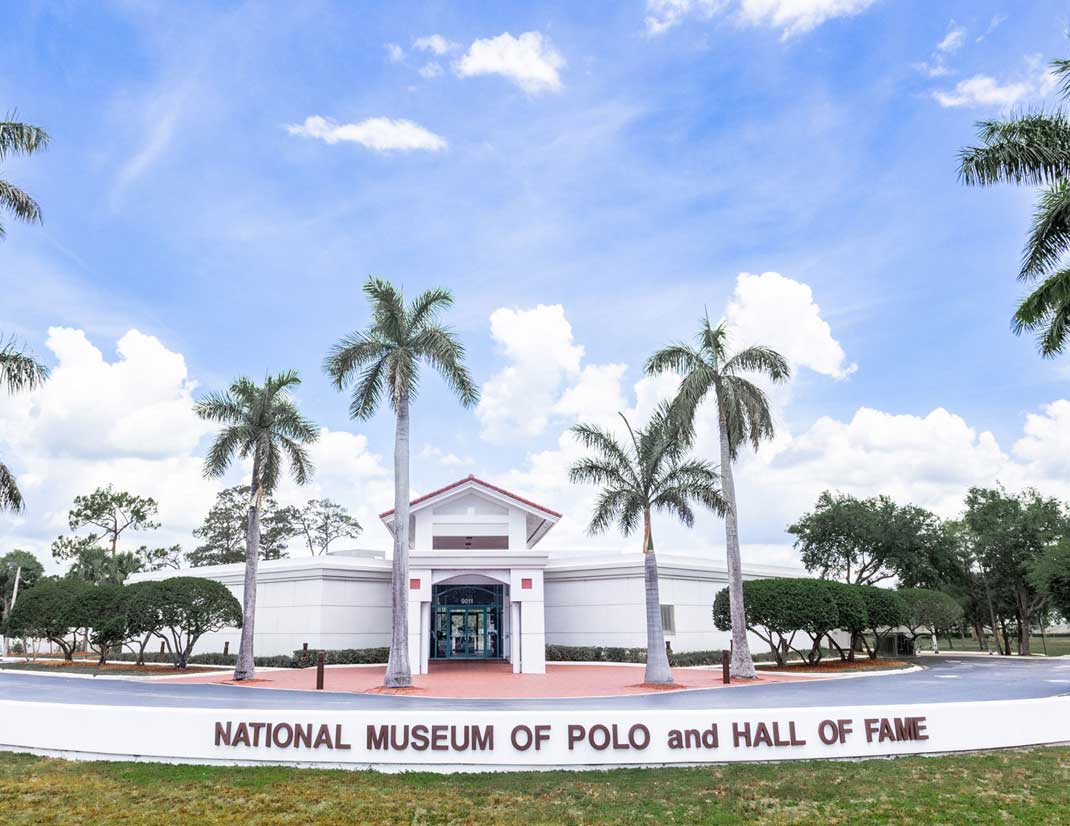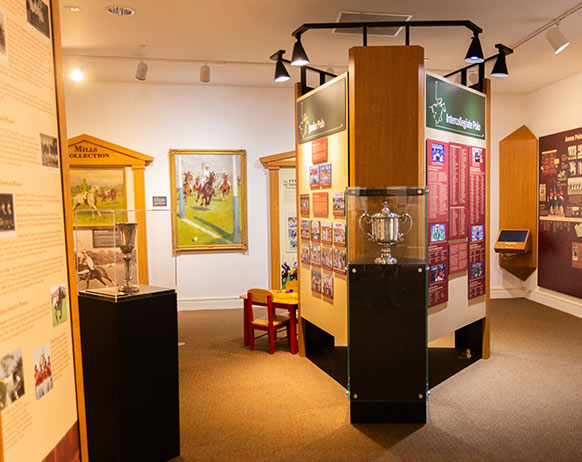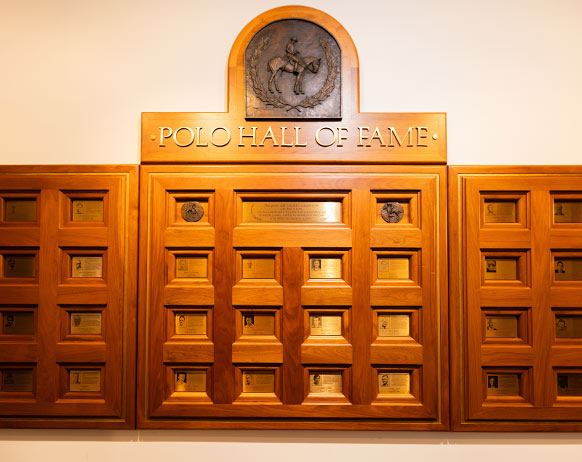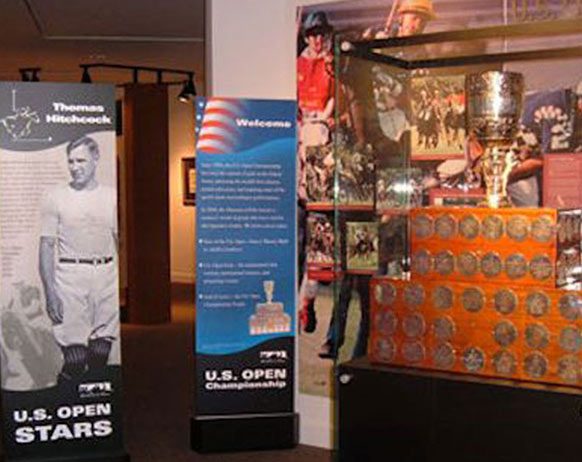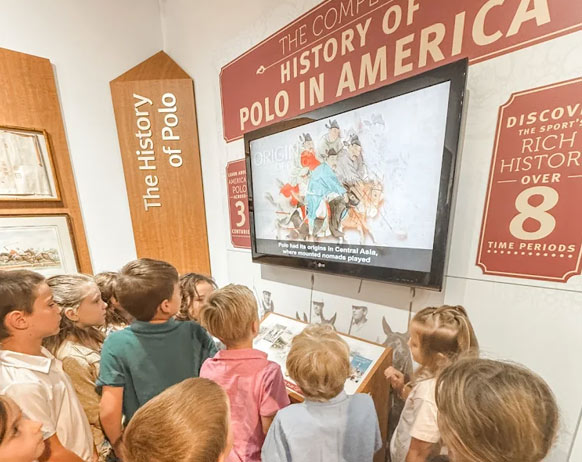Museum of Polo and Hall of Fame
Sport of Polo
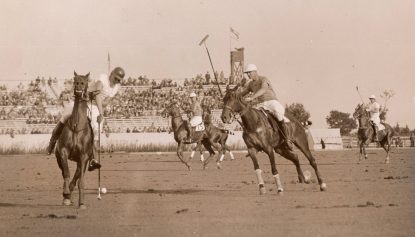
The Game
Polo is a fast-paced team sport played on horseback, where the primary objective is to score goals by striking a small ball into the opposing team’s goal using a long-handled mallet. Traditional outdoor polo is played at high speed on a sprawling grass field measuring up to 300 yards (274 meters) long and 160 yards (146 meters) wide—roughly the size of nine football fields. In this format, a solid plastic ball is used. Arena polo, a more compact variation of the sport, features teams of three players each and is played with a small, air-filled ball similar to a mini soccer ball. A standard match lasts about two hours and is divided into timed periods known as chukkas (or chukkers).
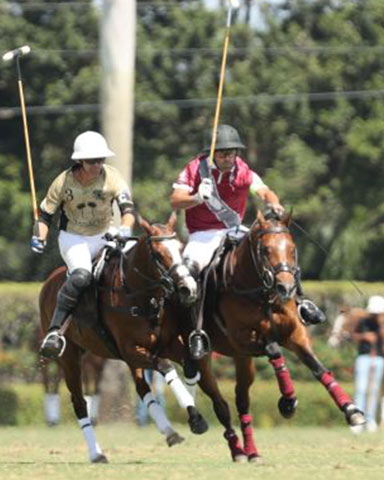
The Players
A polo team consists of four mounted players, each assigned a numbered position with specific responsibilities:
- Number One – The most offense-focused position, this player leads attacks and aims to score, while also marking the opposing team’s Number Four.
- Number Two – A dynamic role on both offense and defense. Offensively, Number Two drives toward goal or supports Number One with passes; defensively, they are tasked with covering the opposing Number Three—often the rival team’s strongest player.
- Number Three – The tactical leader of the team. This player is typically the best all-around rider and hitter, responsible for directing plays, distributing the ball forward, and providing defensive support.
- Number Four – Primarily a defensive anchor, Number Four protects the back field and disrupts opposing attacks. While they can move freely around the field, their main objective is to allow teammates to press forward by focusing on defense plays and strategies.
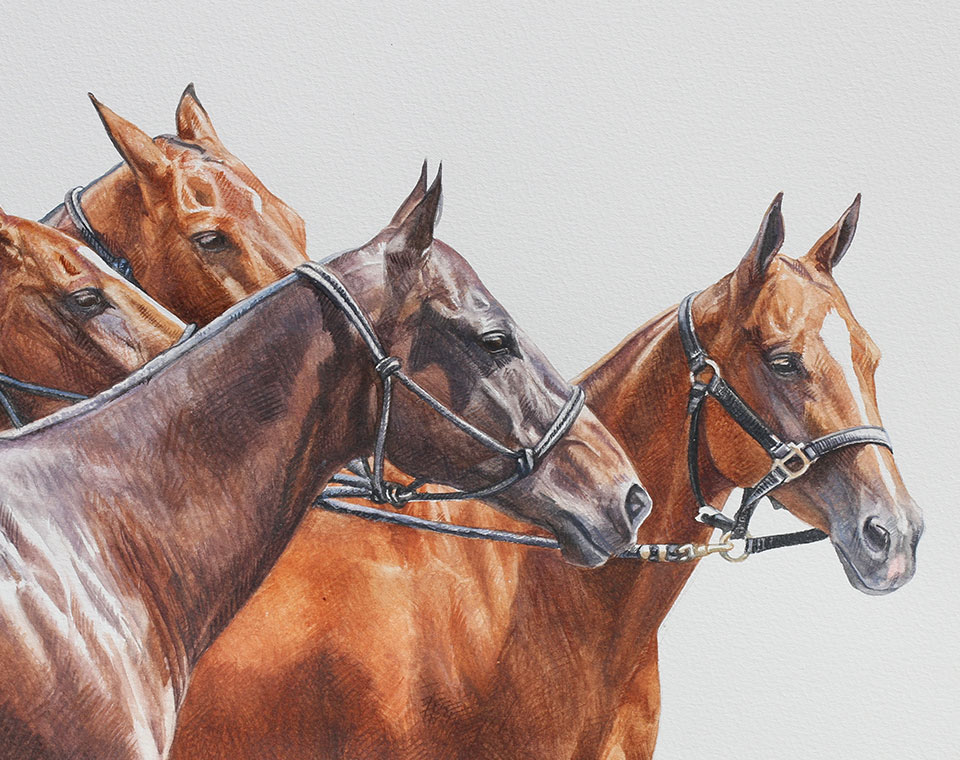
The Horses
In polo, mounts are traditionally referred to as “ponies,” though they are in fact full-sized horses. These athletic animals typically stand between 14.2 and 16 hands high (58 to 64 inches at the withers) and weigh between 900 and 1,100 pounds. Polo ponies are specifically selected for their ability to deliver short bursts of speed, stamina, agility, and exceptional maneuverability. Equally important is their temperament: they must remain calm and responsive under pressure, never becoming excitable or difficult to control. Trained to be guided with one hand on the reins, they respond sensitively to the rider’s leg and weight cues. A well-trained polo pony is a vital asset—often contributing significantly to a player’s overall value to their team.
Because of the intense demands of the sport, players require multiple ponies to rotate throughout a match. Tired mounts are swapped out between—or even during—chukkas to maintain peak performance. In Low Goal matches, a player’s string may consist of just two or three ponies, with each resting for at least one chukka before being reused. For Medium Goal games, players often bring four or more mounts, ensuring at least one fresh pony per chukka. At the highest levels of competition, even larger strings are common.
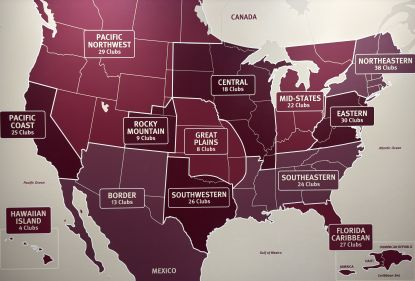
The Clubs
Polo is actively played in 77 countries worldwide, though professional-level competition is concentrated in fewer nations—most notably Argentina, Australia, Canada, Chile, France, Germany, India, Iran, Mexico, New Zealand, Pakistan, Spain, the United Kingdom, and the United States.
In the United States, the sport is supported by over 275 registered polo clubs and more than 4,500 members under the United States Polo Association (USPA).
The oldest active polo club in the world is the Calcutta Polo Club in India, founded in 1862.
Visit the Polo Museum
The Museum of Polo and Hall of Fame is a non-profit educational organization in Lake Worth, Florida, dedicated to fostering an appreciation of the sport, its history, development, and traditions by acquiring, preserving, exhibiting, and interpreting collections, as well as honoring those who have made outstanding contributions to the sport.

